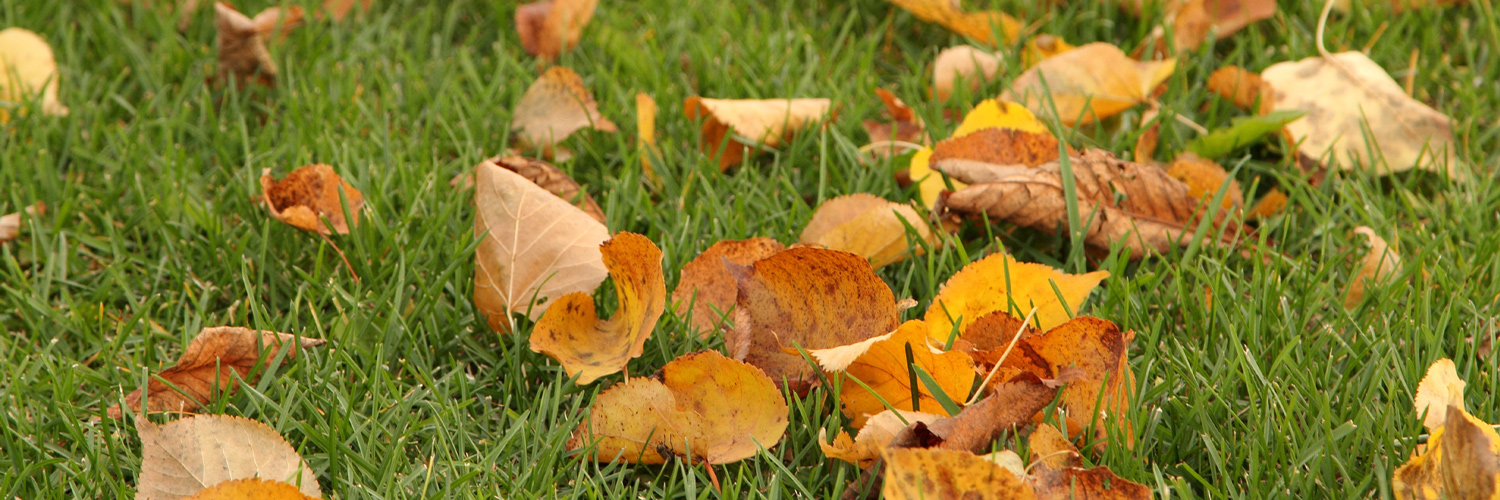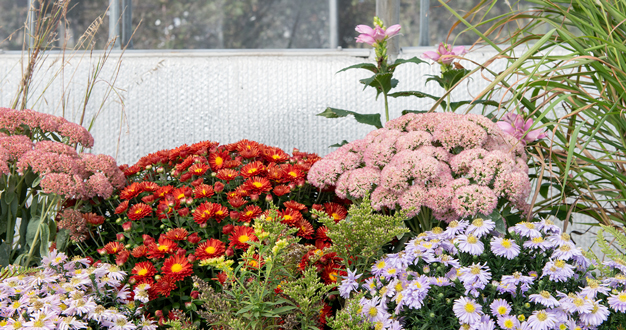
As the growing season begins to wind down, it’s a great time to help your lawn get in the best shape for the long, cold winter to come. And if you’re wondering how to have a green, healthy lawn while at the same time meeting your goals of a low-impact, environmentally friendly approach to its care, we have some helpful tips to share.
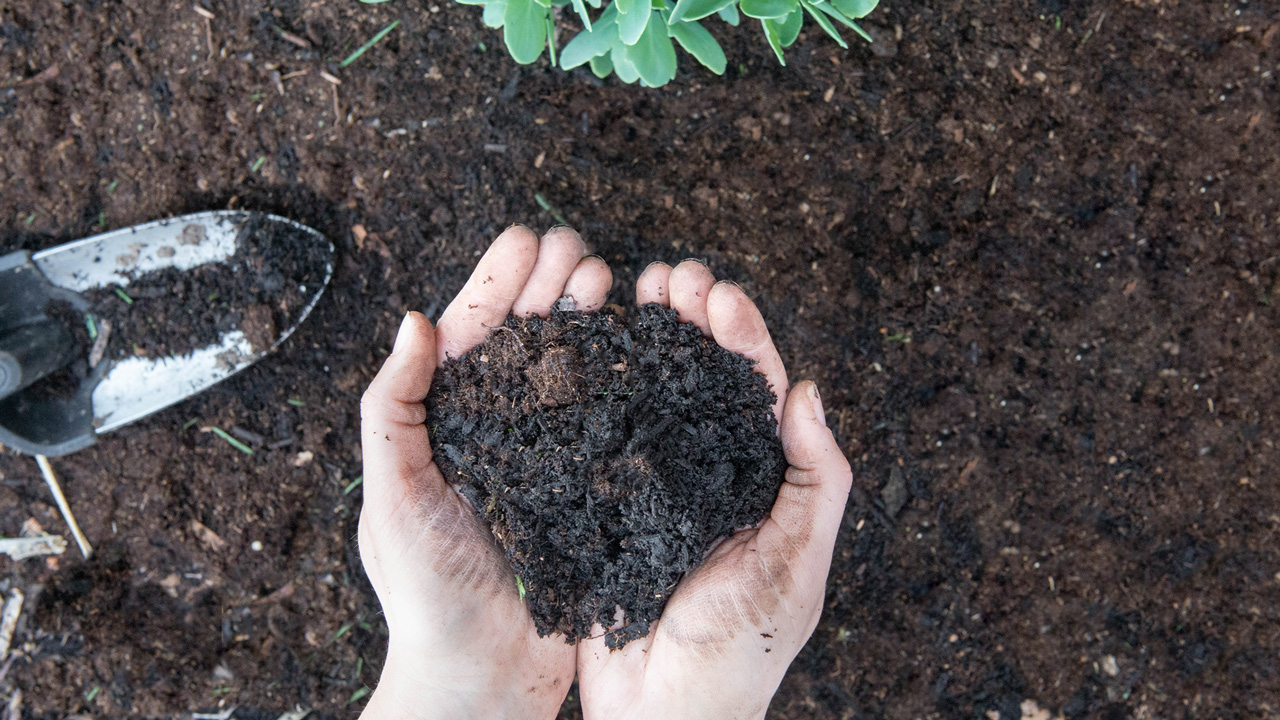
Start with a Healthy Soil
Like all plants, turfgrasses are happiest when they have healthy soil – and happy plants are more resistant to diseases, pests, and climate stress. is alive with a teeming community of bacteria, fungi, insects, and worms that work together to create a balanced support system for plants. The products and cultural practices we use on our lawn can have a direct impact on the health and function of this important soil community.
Use Organic or Natural Fertilizers When Possible
Organic fertilizers such as compost, vegetable and animal meals, and worm castings “feed” the soil community. Soil microbes in turn break down the organic matter into nutrients that plants can actually absorb. The microbes’ activity also improves the structure of the soil, allowing better drainage and air exchange with the roots. In contrast, ongoing use of synthetic fertilizers can lead to declines in the soil microbe community and even make your lawn more dependent on their use to stay green.
Applying fertilizer is a key part of lawn care during the growing season, but in the fall, it takes on added importance. Although traditionally it has been thought that a two-part fertilization process that involved applying fertilizer after October was good, new research has shown that by November, the lawn is beginning to go dormant and most of the nitrogen in the fertilizer simply washes off at that time. New recommendations suggest applying a winterizer product by mid-October in order to help your lawn green up in the spring and ensure that the product you put down gets used by the grass instead of ending up in our natural waterways.
Leave the Clippings
Grass clippings are a perfect way to return valuable organic material to the soil where the microbes break them down into nutrients that they and the lawn can use again. So consider removing the bag from your mower.
Mow or Remove Fallen Leaves
Although leaves are also made of organic material, large accumulations of fallen leaves can smother the lawn in places, so it’s best to rake them up and add them to your compost pile. Or, mow over them with your lawn mower to chop them into tiny pieces that break down faster while letting light and air reach the grass.
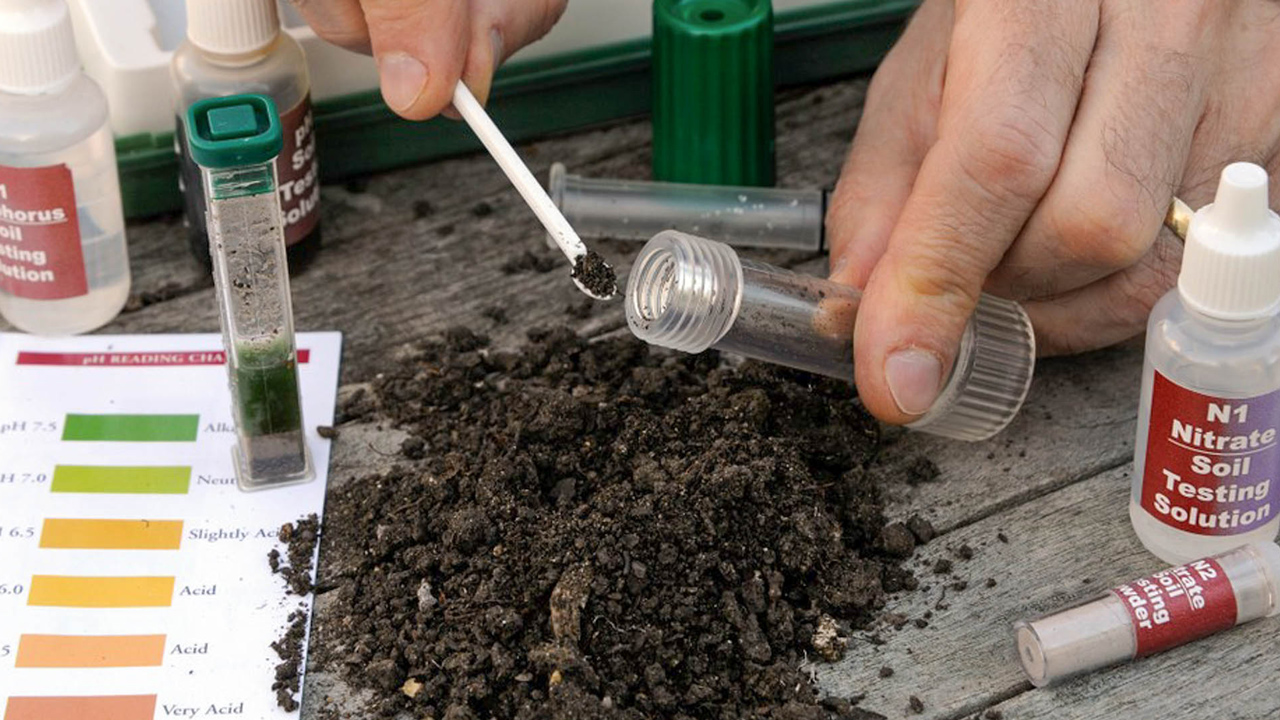
Test Your Soil before Fertilizing
Whether you use organic or synthetic fertilizers, it’s a good idea to test the pH level of your soil and the amount of nutrients it already contains before applying products that it may or may not need. Here at our store, we have soil test kits you can use to test the soil yourself. Or in Omaha, Midwest Laboratories offers more comprehensive soil testing too. If you’re not sure what to make of the results, their team can help, or you can always ask a member of our Plant Care team as well.
Photo Credit // GardenersWorld.com

Know Your Weeds
Fall is the perfect time to target perennial weeds – like violet, dandelion, clover, bindweed, plantain, burdock, and ground ivy – which grow back from their roots every year. When applied with care and at the right time of year, chemical weed control can be an effective method. For the most success, wait until after the first frost when the plants begin to draw more nutrients down to their roots in preparation for winter. With the nutrients, they also pull the herbicide, making control more effective.
Annual weeds like crabgrass, spotted spurge, purslane, smartweed, and ragweed, are more effectively treated in the spring using a pre-emergent herbicide.
Use the Right Amount of Product
Take some extra time to figure out how much lawn you have – usually measured in square feet – so you can apply the right amount of fertilizer and other products following the directions on the label. Too much can stress the lawn or just run off and pollute our natural waterways. Too little may not meet the needs of your turfgrass and can leave it vulnerable to weeds and other issues. Once you know the area of your lawn, you’ll know exactly how much product to buy and how to calibrate your spreader to distribute it properly.
Add More Water Less Often
Even when the weather cools off in the fall, continue watering your lawn as needed until the ground freezes. A typical lawn needs about 1 to 1 ½ inches of water each week – either from rainfall, irrigation, or a combination of the two. Ideally, that’s given in the full amount once during the week. Deep, less frequent watering encourages a deeper root system and discourages bacterial and fungal diseases that tend to pop up when a lawn gets wet frequently.
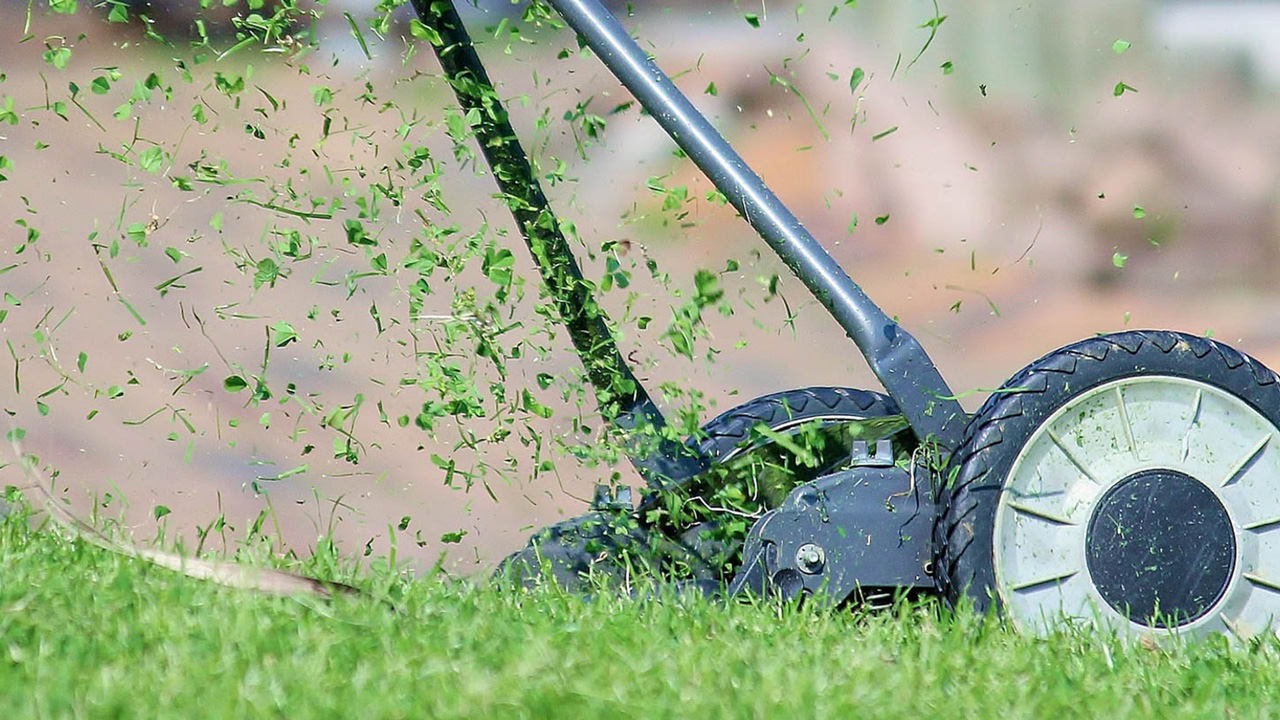
Adjust Your Mower
Allowing your grass to grow just a little taller can reduce unnecessary stress on the plant and help moderate soil temperature, reduce moisture evaporation, and shade out weeds too. For cool-season lawns made of tall fescue and Kentucky bluegrass, an ideal height is three inches throughout the season. To further reduce mowing stress on your lawn, keep the mower blade sharp – a clean cut helps prevent disease. And mow often enough that you only remove about one-third the height of your turfgrass at a time.
Try Low-Maintenance Grasses
If turfgrass is living under conditions it doesn’t like, it’ll be stressed, leading to more problems and potentially more chemical inputs. So consider starting with a low-maintenance grass. In our area, tall fescue blends with a low proportion of bluegrass are a good choice. Buffalo grass is another option – it requires less mowing and less additional water than many other turfgrasses.
Consider Having Less Lawn
A lush, green lawn may offer a certain aesthetic to your landscape, but it can be an intensive crop requiring a lot of time and resources, without giving back much – if any – environmental value. Consider whether your time and money might be better spent converting some of your lawn into landscape beds filled with low-maintenance perennials, trees, and shrubs. You can even use the space to create a pollinator garden, bird-friendly habitat, or a valuable rain garden.

Keep it Easy-Care + Earth-Friendly
As it turns out, adopting an earth-friendly approach can make your lawn maintenance routine easier and less expensive while at the same time reducing the amount of excess water and synthetic chemicals we introduce into our outdoor spaces and the community landscape. It’s a win for everyone. To learn more about earth-friendly lawn care, just give us a call or stop by the store and talk with our team. We’re glad to answer your questions and point out the best plants and products to get you started.

